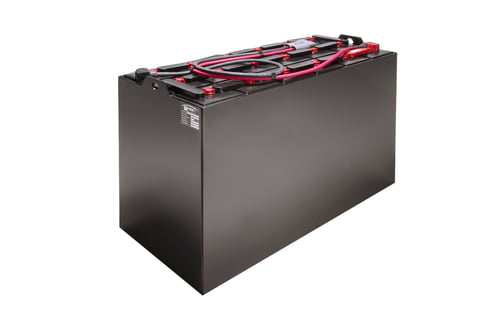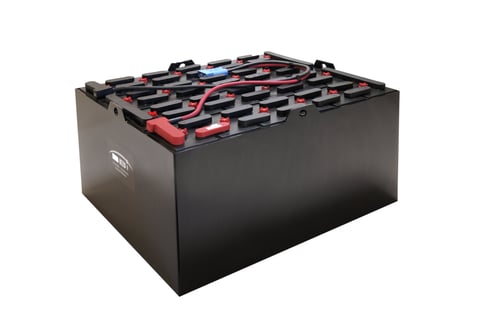
Proper Storage for Lead Acid Forklift Batteries
When it comes to maintaining the performance and longevity of your forklift batteries, the importance of proper storage cannot be overstated. Lead acid forklift batteries are critical components in ensuring that your warehouse operations run smoothly. However, improper storage can lead to a variety of issues, including reduced battery life, safety risks, and increased operational costs. In this article, we will explore the best practices for proper storage for lead acid forklift batteries to help you maximize their efficiency and lifespan.
Understanding Lead Acid Forklift Batteries
Lead acid batteries power many heavy-duty vehicles, including forklifts. They are popular due to their reliability and cost-effectiveness. However, despite their advantages, they require specific handling and storage techniques to ensure optimal performance.
What Makes Lead Acid Forklift Batteries Unique?
Lead acid batteries consist of lead dioxide (PbO2) as the positive plate, sponge lead (Pb) as the negative plate, and sulfuric acid (H2SO4) as the electrolyte. When these components interact during discharge, they produce electrical energy essential for powering forklifts.
- Cost-Effective: These batteries are generally cheaper than other types.
- Durability: They can withstand heavy use.
- High Current Output: Suitable for lifting heavy loads.
- Weight: They are heavier compared to lithium-ion alternatives.
- Maintenance Required: Regular checks on electrolyte levels are necessary.
- Environmental Concerns: Disposal must be handled carefully due to toxic materials.
Why Proper Storage Matters
Storing lead acid forklift batteries improperly can result in several complications:
- Sulfation: A process where lead sulfate crystals build up on the battery plates when left discharged for long periods.
- Corrosion: Exposure to moisture or chemicals can corrode terminals and connections.
- Temperature Effects: Extreme temperatures can cause battery damage or failure.
Proper storage plays a vital role in preventing these issues while ensuring that your investment remains protected.
Proper Storage for Lead Acid Forklift Batteries
Storing your lead acid forklift batteries requires attention to several key factors that contribute to their longevity and efficiency. Below is a comprehensive guide on how to achieve proper storage:
1. Choose the Right Location
The location where you store your forklift batteries is crucial. Here’s what you should consider:
-
Temperature Control: Ideally, store batteries in a climate-controlled environment between 32°F (0°C) and 80°F (27°C). Avoid extreme heat or cold that can affect battery chemistry.
-
Dry Environment: Moisture can cause corrosion. A dry place will help keep terminals clean and operational.

-
Ventilation: Ensure adequate airflow around stored batteries to prevent gas buildup during charging or discharging processes.
2. Maintain Charge Levels
Batteries should not remain discharged for extended periods as it leads to sulfation. Here’s how you can maintain optimal charge levels:
-
Regular Charging Schedule: Implement a routine charging schedule based on usage patterns.
-
Trickle Charging Options: For longer periods of inactivity, consider using trickle chargers that maintain charge without overcharging.
3. Use Proper Racking Systems
When storing multiple forklift batteries:
-
Use specialized racks designed for battery storage which provide adequate support and prevent tipping or damage.
-
Make sure there’s enough space between each battery for ventilation.

4. Conduct Regular Inspections
Regular inspections help identify potential problems before they escalate:
-
Check electrolyte levels regularly; top off with distilled water as needed.
-
Inspect terminals for corrosion and clean them if necessary using a mixture of baking soda and water.
Table 1: Key Factors in Battery Storage
| Factor | Recommended Action | |---------------------|--------------------------------| 12 volt flat plate forklift batteries | Temperature | 32°F (0°C) - 80°F (27°C) | | Environment | Dry & well ventilated | | Charge 72 volt flat plate forklift batteries Level | Maintain above 50% | | Racking System | Use specialized racks | | Inspection Frequency | Monthly checks recommended |
FAQs about Proper Storage for Lead Acid Forklift Batteries
1. What happens if I leave my forklift battery discharged?
Leaving your forklift battery discharged can lead to sulfation—where lead sulfate crystals form on the plates—resulting in reduced capacity and lifespan.
2. How often should I check my battery's electrolyte level?
You should check the electrolyte level monthly or more frequently if used heavily; topping off with distilled water ensures optimal function.
3. Is it safe to store forklift batteries outdoors?
It's not advisable; outdoor conditions expose batteries to temperature fluctuations and moisture which could harm them over time.
4. Should I clean my forklift battery terminals?
Absolutely! Cleaning terminals prevents corrosion that could interfere with electrical connections, improving overall performance.
5. Can extreme temperatures affect my battery's performance?
Yes! Both extreme heat and cold can significantly diminish a battery's ability to hold a charge and may even cause irreversible damage.
6. What type of charger is best for lead acid forklift batteries?
A smart charger is ideal since it adjusts charging rates automatically based on the condition of the battery—this helps prolong its lifespan effectively.
Conclusion
In conclusion, understanding how to store lead acid forklift batteries properly is crucial for any operation relying on these power sources. From selecting an appropriate location to implementing regular maintenance checks, every step matters when it comes to maximizing battery life and efficiency while minimizing safety risks.
By following these guidelines laid out in our comprehensive guide on proper storage for lead acid forklift batteries, you'll not only extend their lifespan but also enhance your operational effectiveness in handling materials efficiently without unexpected downtime caused by faulty equipment.
Taking care of your assets pays off in the long run—the better you manage your forklift batteries’ storage needs today, the more reliable they’ll be tomorrow!